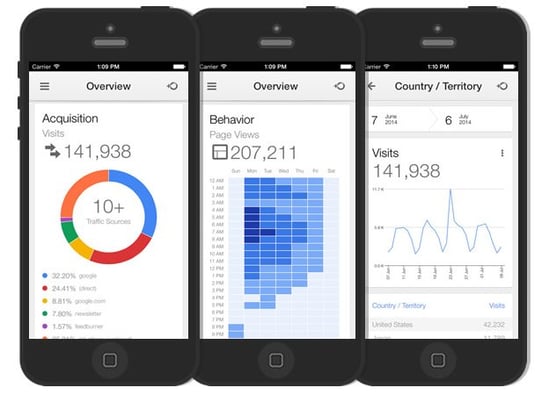The focus on mobile app projects is typically on launching, with little regard for what happens after launch. This isn’t surprising; launching a mobile app is very difficult, and the majority of a team’s effort will be spent on getting the product to market in the most efficient manner.
But what happens after launch? Mobile app development is not a one-and-done: success requires a broader product vision and a sustainable strategy. In order to have any chance at success, you need to have a plan in place that includes analytics to measure performance and iterate, a marketing plan in place to acquire users and drive engagement, and a broader mobile strategy that allows for continuous delivery and improvement.
The reality, however, is most teams don’t have a plan in place to support their mobile app, both from a technical and business perspective. Without a mobile app strategy to sustain and improve the product after launch, there is nothing driving the direction of the product after it enters the market.
We’re going to look at the different post-launch approaches and provide recommendations on how to best address the challenges of sustained success after initial launch. Specifically, we will look at important considerations such as:
- What will happen after we launch? What are we going to do post-launch to gain a competitive advantage?
- How will we handle maintenance, crashes, bugs, etc?
- How will we measure and assess performance?
- What about additional features or roadmap items?
- How will we ensure continuous delivery and improvement to attract, retain, and engage users?
Approaches to Post-Launch Development and Marketing
Typically, there are three ways companies tackle the post-launch phase:
1. Launch and Pray
The “launch and pray” approach is a waste of time and money, but more common than you might think. It happens when the project team focuses exclusively on getting the product to market. There is no consideration for how they will track performance, market the product, add features and functionalities, etc. Any activity post-launch has been ignored, pushed out of sight and mind by a complete focus on shipping the product.
2. Assess and Monitor
This approach typically entails a support or maintenance plan but fails to address continual improvement of the mobile app. It’s more involved than the publish and pray approach and tends to be reactionary rather than proactive. Assessing and monitoring include bug fixes, crash reporting and resolution, and triaging certain technical issues. It often doesn’t include a product roadmap or any kind of strategy to improve and enhance the mobile app and user experience after initial launch. This approach is concerned with maintenance rather than new product features and improvements.
3. Continuous Delivery
The continuous delivery approach includes performance monitoring and assessment in real-time along with rapid product iteration. There is a clearer product vision and known product roadmap in place for additional features after the initial launch, as well as a framework for assessing current features. Continuous delivery is an agile development approach, focusing on the “fast follow” and quick delivery to address technical debt and continually improve the product, both technically and from a user experience perspective.
The Ideal Post-Launch Mobile App Strategy
A continuous delivery approach is ideal, allowing for a more holistic strategy that gives your product a much clearer direction. The first two approaches mentioned are often disjointed and can result in launching an app that may not solve business problems or customer pain points. Furthermore, these approaches tend to lead to a misunderstanding of cost involved and what exactly can be accomplished. With the continuous delivery model, you have a clear strategy that gives the product direction so you don’t waste money and can align the product with business objectives.
This doesn’t mean you have to keep spending at the same pace or in the same area. This strategy ensures the business has a mobile strategy that is constantly evolving and changing just as every business does.
Tips on Enacting Continuous Delivery Post-Launch:
- Have a forward post-launch vision of at least 3-6 months
- Clearly identify goals and objectives for the mobile app, including KPIs, success metrics, and short- and long-term goals
- Have a product roadmap that includes features that weren’t essential for version one, UX enhancements, API/service optimizations that need to be addressed, and other improvements/enhancements that align with your product vision
- Create a framework for measuring and assessing mobile app performance, including analytics solutions and user behavior metrics, and align it with business objectives
- Identify budgetary needs for both technical delivery, and marketing and promotional requirements for reaching your outlined goals and objectives
Final Thoughts
Launching a mobile app is understandably the highest priority for most project teams. However, focusing on launch without regard for post-launch success and delivery is short-sighted and a recipe for failure. Whether internally or in partnership with a mobile app development firm, it is imperative that you have a mobile strategy that champions continuous delivery so you can improve your product, maintain a clear direction, and meet business objectives long after the initial launch of your mobile app.





